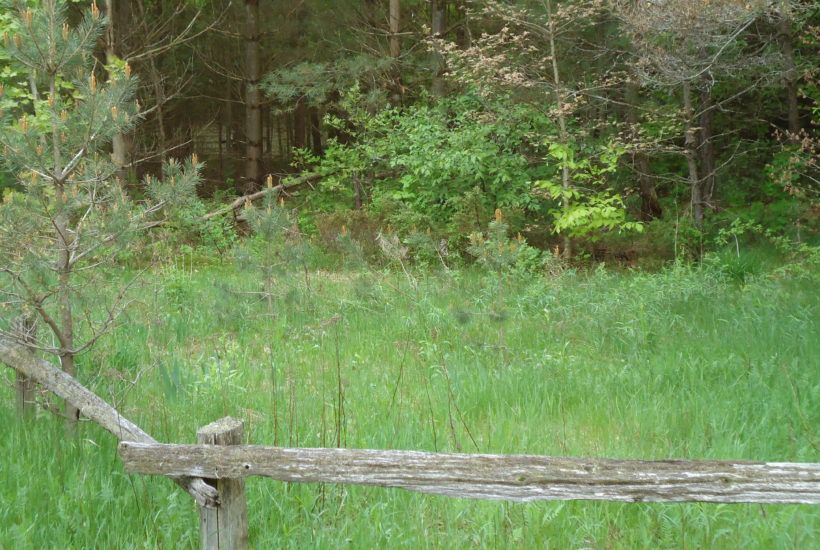As I harvested the first of the lettuce from my garden this week, I thought about the pioneers living along The Muskoka Road. The first settlers to take up the “free grant lands” arrived in October 1859. They hauled themselves up the rock ridge just north of the Severn River and then scouted out an allotted 100 acres for their farmsteads. Only the lots directly adjacent to the road had been surveyed, and none of the families realized at the time that these initial 94 lots between Severn River and McCabe’s Landing (Gravenhurst) were some of the worst in the district for farming.

Of course it was too late in the season to plant anything. The job at hand was to chop out a small clearing and build a shanty for the winter. But most settlers also cut the underbrush from the first acre or two in preparation for creating a field to plant in spring. They piled up the underbrush and then over the winter chopped down some of the large trees. Using axes. Against old growth pines, some of which were 100 feet high and 7 feet in diameter. They cut the trunks of the trees into lengths of about 15 feet and heaved them onto the underbrush.
In May, when the brush was dry enough to burn, and on a day when the wind was blowing away from the new shanty, the pioneer collected some dry hemlock and birch bark and a piece of punk (dry, rotten wood). Crouching over this, he scratched his knife on a flint stone to strike a spark, then watched as a thin thread of smoke snaked up from the punk. With some blowing, the fire caught the bark and spread, until it was a great billowing mass. Funnels and forks of flames raced through the dry tinder. The pioneer moved carefully among the piles of brush, lighting each one until the acre blazed in one great inferno. By nightfall the fire died down, leaving the earth and skeletal stumps of trees black and scorched. The great piles of brush were gone, but charred logs remained and would have to be picked up, piled and burned again over the course of several days. Only the burnt stumps of the largest trees were left standing. It took about seven years before the roots had rotted enough to be pulled out. So wherever there was room between the tree stumps, the pioneers planted their crops of potatoes, garden produce, corn and buckwheat.
Salad, anyone?
This kind of stuff just kills me. I can’t imagine the grit required to face a job like this and actually stay, instead of turning tail and running. The people who did stay, and turned this area into a successfully populated area, are real heroes.
When I hear this I am always amazed at the time and hard work that these pioneers put in to have food. Just amazing.